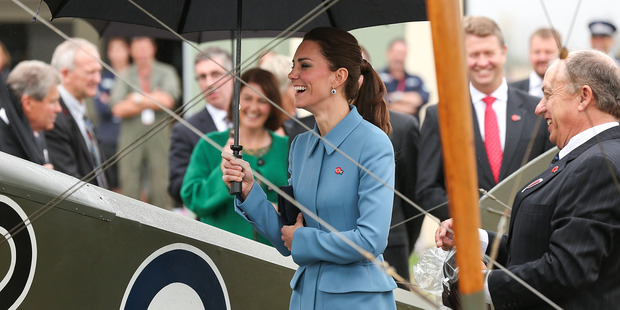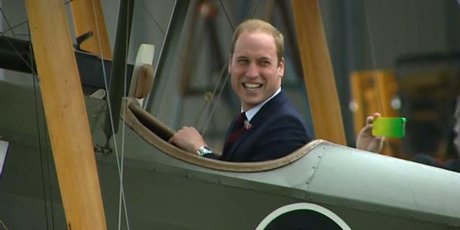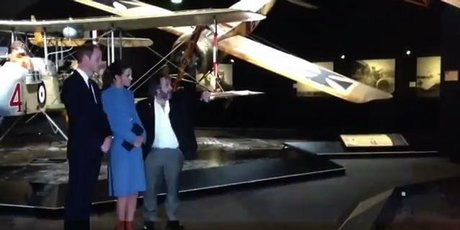Manila files South China Sea claim
By Richard Heydarian
MANILA - After a year of futile diplomatic efforts aimed at resolving the South China Sea disputes, the Philippines has risked permanent estrangement with China by pressing ahead this week with an unprecedented arbitration case before a United Nations court at The Hague, while ironing out a new security pact with the United States.
The primary goal of the Philippines' latest maneuver is to put maximum pressure on China amid an intensifying territorial dispute, which has raised fears of direct military conflict. Manila has been alarmed by the increasing assertiveness of Chinese paramilitary vessels, which have reportedly harassed Filipino fishermen straddling the South China Sea as well as threatened
Filipino troops stationed across varying disputed features in the area.
In the disputed Second Thomas Shoal, for instance, recent weeks saw Chinese paramilitary forces imposing a tightening siege on Filipino troops, who have struggled to receive supply materials from their military command headquarters in the Philippines.
Since 1999, the Philippines has exercised effective and continuous control over the disputed feature, which falls well within the country's 200-nautical mile exclusive economic zone (EEZ). But China is seemingly bent on seizing control of the shoal, which is very close to the hydrocarbon-rich waters off the coast of the southwestern Philippine island of Palawan.
From the perspective of the Filipino leadership, China is not only threatening the country's territorial integrity, but also its vital economic and energy security interests in the South China Sea. In addition, the Philippines and its principal military ally, the United States, share similar concerns over China's accelerated military spending. Beijing has focused on enhancing the country's naval capabilities, part of China's short-term goal of consolidating its territorial claims in the Western Pacific - and its long-term ambition of becoming the preeminent naval power in Asia.
"We will resolutely safeguard China's sovereignty, security and development interests," Chinese Premier Li Keqiang said at the opening session of the National People's Congress in early March. "We will comprehensively enhance the revolutionary nature of the Chinese armed forces, further modernize them and upgrade their performance, and continue to raise their deterrence and combat capabilities in the information age."
Recognizing the apparent futility of existing diplomatic efforts, Philippine President Benigno Aquino effectively abandoned his earlier attempts at reviving bilateral channels of communication with the top Chinese leadership when he chose to provocatively liken China to "Nazi Germany".
"At what point do you say: 'Enough is enough'? Well, the world has to say it. Remember that the Sudetenland was given in an attempt to appease Hitler to prevent World War II," exclaimed Aquino, during an exclusive interview with the New York Times, where he compared China's rising territorial ambitions in the South China Sea to Nazi Germany's annexation of the then Czechoslovakian territory in the early 20th century.
China was outraged by Aquino's comments, dismissing him as an "amateurish" leader with little appreciation for the delicate art of diplomacy and conflict management. At this point, there seemed little goodwill left for resuscitating frayed bilateral relations.
With diplomacy taking the back seat, the Philippines has stepped up its efforts to welcome a greater American military presence on its soil. Under the proposed Enhanced Defense Cooperation, the Philippines is offering the US expanded access to its military bases in Subic and Clark. In exchange, the Philippines is seeking enhanced US military aid, increased joint military exercises, and, potentially, even temporary access to American military hardware to counter China's maritime assertiveness.
"The proposed agreement will allow the sharing of defined areas within certain AFP [Armed Forces of the Philippines] facilities with elements of the US military on a rotational basis within parameters consistent with the Philippine Constitution and laws," explained the Philippine Department of National Defense, which has strongly lobbied for deeper military relations with Washington in order to enhance the country's "minimum deterrence capability".
The Philippines' direct legal challenge to China's sweeping territorial claims in the South China Sea, however, is the greatest source of tension in bilateral relations. In early 2013, the Philippines initiated an ambitious arbitration case at the International Tribunal for the Law of the Sea (ITLOS) at The Hague, with the explicit aim of undermining China's notorious "Nine-dash line" doctrine, which accords Beijing "inherent" and "indisputable" sovereignty over the bulk of the South China Sea.
The Philippines contends that China, as a party to the United Nations Convention on the Law of the Sea, is obliged to respect the Philippines' rights to exercise qualified control over features that fall within its 200-nautical mile EEZ. These include, among other features, not only the Second Thomas Shoal, but also the Scarborough Shoal, which was effectively seized by China after a brief military standoff in mid-2012.
In early 2014, China reportedly offered certain "carrots" in exchange for the Philippines' decision to postpone its submission of its formal written complaint - known as "memorial" in legal parlance - at the ITLOS. Beijing reportedly offered, among other things, mutual disengagement from the contested features such as the Scarborough Shoal, trade and investment benefits, and postponement of the planned Chinese imposition of an air defense identification Zone in the South China Sea.
The more hardline factions within the Philippine leadership reportedly refused to entertain China's offer, and convinced the Aquino administration to push ahead with the arbitration move.
"It is about securing our children's future. It is about guaranteeing freedom of navigation for all nations," said Philippine Foreign Affairs Secretary Albert del Rosario, who oversaw the filing on March 30 of a voluminous memorial against China at ITLOS. "It is about helping to preserve regional peace, security and stability. And finally, it is about seeking not just any kind of resolution but a just and durable solution grounded [in] international law."
The Philippines hopes that its latest legal challenge to China will rally like-minded countries such as Vietnam and Japan as well as the broader international community behind its own cause. But the Philippines' latest decision runs the risk of irreversibly antagonizing China, which could, in turn, permanently undermine diplomatic efforts at peacefully resolving the South China Sea disputes and pave the way for a military showdown.
Mr. Bailey's 1st Block IR-GSI Class blog focused on the current events of East Asia and Oceania
Thursday, April 10, 2014
Royals Arrive in New Zealand
Royals arrive to greet Blenheim crowds
By Kurt Bayer, Teuila Fuatai
2:09 PM Thursday Apr 10, 2014
- Save
- Tweet on Twitter9

The royal couple have been given a personal tour of the Omaka Aviation Heritage Centre's collection of vintage planes by Sir Peter Jackson.
Royal watchers have migrated to the Centre for the second stop of Prince William and Catherine's stint in Marlborough.
 Video
VideoWet weather, which held off for this morning's ceremony at Seymour Square, failed to dampen the crowd's enthusiasm, which cheered as Kate and William arrived.
The pair were greeted by Sir Peter.
More than dozen aeroplanes from World War 1 and World War II were wheeled out of their Omaka Aviation Heritage Centre hangars in preparation for the royal couple's visit.
The Duke and Duchess were wowed when they entered the world-renowned museum.
A 26 foot-long grey WWI relic, a Caproni CA 22, greeted the royal pair for the start of the tour by Sir Peter Jackson.
"Oh wow, look at this!'' said an apparently impressed Prince William.
"This is awesome. How old is this?''
"1913,'' Sir Peter said.
Kate let her husband go ahead with the director while she walked with centre chief executive Jane Orphan.
Prime Minister John Key was also taking a keen interest.
Sir Peter, wearing a double-breasted jacket and tan trousers, strolled around his prize exhibits with a hand in his pocket, reeling off historical facts and insight.
 Video
VideoPrince William, a pilot, was full of questions, becoming animated with the WWI and WWII planes hanging from the ceiling.
Kate soon joined in with the unique personalised tour.
The royal couple then disappeared from sight as Sir Peter continued the tour.
They then emerged to be greeted by World War Two Spitfire pilot Harcourt "Bunty" Bunt.
The 93-year-old from Picton explained the story of New Zealand's highest scoring ace of The Great War, Lt Keith Logan 'Grid' Caldwell.
Sir Peter left it to Bunty to explain the "Boyzone" story.
The couple listened intently to the amazing war tale.
Caldwell got into trouble behind enemy lines.
At 5000-feet he stepped out onto his wing - a fact that amazed the couple - and hung on to wing to control the plane and jumped off.
"He brushed himself off," and made contact with trenches, Bunty said.
"No way, that's amazing," William said.
"And how fast was he going when he jumped off?"
Sir Peter explained how he might've done it.
Kate added: "That's an extraordinary story."
She asked if he told his story while he was alive, to which her husband added: "He probably dined out on it for some time."
Bunty went on tell his life story. The royals were deeply interested in the tale and thanked Bunty for sharing it.
They were also shown the remarkable life-like exhibition of the infamous Red Baron's last flight when he was shot down over British lines and killed in 1918 - after a record 80 planes brought down.
Sir Peter explained that Australian troops were first on the scene and they proceeded to strip the plane for mementoes. It was a fact that brought a chortle from the prince. He wondered where the paraphernalia was now.
Sir Peter explained how they got the scene historically accurate, even down to the Somme field of mud it landed in.
William showed insight by noting the reason why so much is known about the crash scene is from those Australians.
At the end of the 30-minute tour, the Duke and Duchess had a brief look in the gift shop, full of scale plane models.
In a short presentation, Omaka Aviation Heritage Centre gifted Prince George a tiny vintage flying helmet.
"Oooh," the princess cooed when she opened it.
"That's brilliant," she added, thanking the centre.
The helmet was made by Trevor Lamb, using deer leather and has been custom dyed and finished, with a lining of New Zealand possum fur, Ms Orphan said.
The couple were then taken outside where several of the antique planes were lined up in mild drizzle.
The flying prince then sat in the cockpit of a Sopwith Pup biplane.
"It's perfect. Start her up," he said.
Graham Orphan showed the pair, under umbrellas with worsening damp, to several more planes.
A large waiting crowd clapped and cheered as they strolled around.
"I love you," one young girl called out.
The royal couple also stepped inside an Avro Anson plane from WWII, complete with rear gun turret.
Plane owners Bill Reid and his wife Robyn told them it took ten years to restore the plane - the only kind of its type.
William sat at the controls for some time, amazed with the cockpit controls, all from the war period, painstakingly restored.
Sir Peter, a benefactor of the Omaka Aviation Heritage Centre trust, said it was great to have the royal couple at the museum.
Prince William, who is an avid flyer, asked plenty of questions throughout the tour, he said.
"It nice, very, very nice," Sir Peter said.
In the couple's final moments of their visit to the centre, Sir Peter and Prince William could be heard joking about flying in New Zealand.
"I don't know what the paperwork is," Sir Peter said to the Duke.
A special touch was when 9-year-old Tallulah Dabinette was pulled out of the crowd to meet the royal couple.
She was holding a framed photograph of her as a 7-month-old baby meeting Prince William during a 2005 visit to New Zealand.
Along with sister Eloise, 7, and mother Sara-Lee, they met the Duke and Duchess and gifted them the picture.
"Thanks very much, it's very special,'' a touched Prince said.
He and his wife joked about "what age does'' and thanked them again.
Afterwards, all of three of them were blown away.
Tallulah, who goes to nearby Fairhall School, said the experience was "so cool''.
Ms Dabinette said the royals remarked on the acorns embedded in the wooden picture frame, saying that acorns were ``very special'' to them as they feature of their coat of arms.
If you're out spotting the royals, we want your snaps. Share them with us, including details of where you took the photo, here.
Earlier today, the royal couple arrived at Seymour Square 15 minutes after their 11am scheduled time.
Children hoping to see the glamorous pair sat on top of their parents' shoulders, while other people chose to take a perch in some of the larger trees around the square.
The duchess wore a blue Alexander McQueen coat, clinched at the waist with pleats at the back.
Her husband had war medals displayed on the left lapel of his navy suit jacket.
High pitched shrieks and yells of delight welcomed the couple to Seymour Square.
 Video
Video
Cameras and mobile phones were hoisted high above the heads to capture a regal peek.
One couple standing on step ladders called out "Who's laughing at our steps now?".
The royal couple met 10 veterans and paid their respects to the fallen World War one soldiers.
The Last Post echoed round the park.
The RSA ode was read in Maori and in English by Staff Sergeant Paul Whakatihi of the Royal New Zealand Infantry Regiment reserves and Marlborough RSA Vice President Rod Shoemark, respectively.
Marlborough Girls' College Year 12 students Olivia Burns and Alice Schofield sang the national anthem as a helicopter droned overhead.
World War II veteran Wilton Sterritt was one of 10 serviceman who met the Duchess today.
"Just beautiful,'' he said.
Mr Sterritt, who gave his age as over 90, brought a special photo to show the royal couple today.

The photograph shows a much younger Mr Sterritt with a relaxed looking Prince Phillip. Photo / Getty Images, Teuila Fuatai
"It's the Duke of Edinburgh at the [Christchurch] Commonwealth Games in 1974.''
The photograph shows a much younger Mr Sterritt with a relaxed looking Prince Phillip.
"I was on the organising committee [for the Commonwealth] games. I had to show him around all the shooting venues.''
While Mr Sterritt - who was a naval seaman - acknowledged the photo was a hit with Kate, he confessed to not being too aware of the conversation when asked what they discussed.
"I've got short memory,'' he laughed.
Crowds clamour for glimpse of royals
Isla Read, 7, was left trembling with excitement after the princess accepted a bouquet of flowers from her.
"My legs are shaking," the Springlands School Year 3 pupil told her mum, Moira Maher.
Isla told the Duchess: "Nice to meet you.''
Kate, who took her time shaking hands and exchanging pleasantries with the adoring fans, replied: "Nice to meet you too."
She then thanked her for the bouquet of lilac posies.
Ms Maher said: "It's really exciting for Isla. It'll be something to remember the rest of her life."
They watched the royal wedding three years ago and were delighted to see them in the flesh.
"It's very special - and great for the town."
Ayla Simpson, 11, arrived at 6.30am to snatch up one of the prime positions at the square.
"There were only four other groups of people here, not this many," she said, excited.
Ayla, who is from Blenheim, was the first of her four friends to arrive.
The group hung a flag of the Duke and Duchess over the barrier in front of them, and had also made paper crowns for the occasion.
"It's cool, we're only here once."
Also in the crowd was Sally Small.
Miss Small and her friends had brought deck chairs and biscuits for the wait.
"We got here at 8am.
"We're here to see the royal couple".
Many people are wearing the red, white and blue of Britain and many are waving Union Jack flags.
Lynda Day, 64, and Veronica Dugdale, 68, have come from Motueka for the day.
"It's very exciting, isn't it," Mrs Day said.
Seeing Kate was the main event for her.
But Mrs Dugdale, originally from England, especially wanted to see William.
"I remember when Diana was laid to rest and how huge that was," she said.
She is disappointed that she won't see baby George, though.
"It's a shame Kate isn't taking George more places, especially since Diana took William everywhere. I guess I shouldn't compare generations."
Earlier today, Marlborough's mayor Alistair Sowman said the occasion was particularly significant for veterans.
About 100 servicemen and women have been invited to the commemoration.
Mr Sowman told Newstalk ZB the day is a chance to join the royal couple in commemorating 100 years since the outbreak of World War One.
The commemoration will be followed by a visit to the Omaka Aviation Heritage Centre, where film director Sir Peter Jackson will give the royals a personal tour of his private plane collection.
William and Kate's day will conclude with meetings with Prime Minister John Key and Labour leader David Cunliffe, and a state reception at Government House.
Marlborough Girls College students Isabella Chaytor-Waddy, Georgia Lee, and Rose Asriamah - all aged 15 - were delighted to see some celebrities come to town - and get some time off school.
"No one ever comes to Blenheim so we're pretty excited to see the royals," Miss Chaytor-Waddy said.
And Miss Lee added: "Especially Will and Kate ... they're quite new. She's quite modern."
"It's just a shame baby George isn't here," Miss Asriamah said.
The Haydon family from Nelson, dad Shane, 21-month-old Edward, William, 5, Samuel, 3, and mum Sarah, have got into the spirit of the occasion.
Mrs Haydon, originally from England, says it's a day to support her homeland and to "feel very patriotic".
She's been planning all week, husband Shane said.
The kids even know how to do the "Royal wave".
"It's fantastic to be able to see them," Mrs Haydon says.
"We've taken kids out of school. We're doing to do a project for school too.
"William has been saying he's very excited to see Prince William."
New Signal Found in Indian Ocean
SEARCH crews have detected a new signal from the depths of the Indian Ocean, thought to be from Flight MH370.
Former Defence chief Angus Houston, heading the Joint Agency Coordination Centre in Perth, confirmed an aircraft has detected a possible signal in the vicinity of Ocean Shield in search for the missing Malaysia Airlines plane.
It is understood it was detected by a RAAF P-3 Orion plane in the search zone.
The signal will be further analysed but it is potentially from a man-made source.
“The acoustic data will require further analysis overnight,” Houston said.
It brings the number of signals that have been detected so far to five.
The Associated Press said the aircraft had dropped sound-locating buoys by parachute into an area near where the sounds were last heard.
The latest development comes after the Australian Defence vessel Ocean Shield failed to detect underwater signals earlier today after positive transmissions thought to be from Malaysia Airlines Flight MH370 were received on Saturday and Tuesday.
“They continued the pinger operations through the night,” Houston said.
“They haven’t picked up anything. I don’t know how much longer they’ll go for because the likelihood on Day 34 is that the batteries must be getting near their use-by date.”
He said no decision had been made to send down automated underwater vessel, Bluefin 21 yet.
The two transmissions that were received on Tuesday were markedly weaker than the two sustained transmissions heard on Saturday.
Both sets of transmissions have been determined to be consistent with man-made frequencies coming from airplane black boxes.
The news comes as a large number of objects were spotted by aircraft and ships during yesterday’s search, but none of the “small number” recovered were believed to be related to missing Malaysia Airlines flight MH370.
Up to 14 aircraft and 13 ships will be part of today’s effort, 2280 kilometres north west of Perth, with isolated showers predicted.
Australian ship Ocean Shield will continue its underwater search for signals to the north of the defined area, as Chinese ship Haixun 01 and HMS Echo look in the south.

Latest search zone ... this map released by AMSA shows the target of today’s search. Source: Supplied
As the search parties prepare for another day scouring the Indian Ocean, Malaysia’s Prime Minister has called on the world to unite in prayer, saying he is “more optimistic” that MH370 can be found amid the discovery of two new signals.
Najib Razak tweeted that the update from Joint Agency Coordination Centre head and retired Air Chief Marshal Angus Houston had provided hope.
Yesterday, Air Chief Marshal Houston said the number of transmissions detected by Ocean Shield now stood at four.
“(The) signals will assist in better defining a reduced and much more manageable search area on the ocean floor,” he said.
“The better Ocean Shield can define the area, the easier it will be for the autonomous underwater vehicle to subsequently search for aircraft wreckage.”
“I believe we are searching in the right area, but we need to visually identify aircraft wreckage before we can confirm with certainty that this is the final resting place of MH370,” Air Chief Marshal Houston said.

Optimistic ... Australian Prime Minister Tony Abbott (R) bids farewell to Malaysian Prime Minister Najib Razak after his visit to Perth.Source: AFP
The news was warmly received by Malaysia’s Acting Transport Minister Hishammuddin Hussein who tweeted that Air Chief Marshal Houston was “very professional” and “seems (like) a good man.”
Air Chief Marshal Houston said data analysis of the first two detections found they were consistent with “the specification and description” of a flight data recorder.

Two signals ... The chief co-ordinator of the Joint Agency Coordination Center Retired Australian Air Chief Marshal Angus Houston.Source: AP
According to work conducted by the Australian Joint Acoustic Analysis Centre at HMAS Albatross in Nowra NSW, it was not of natural origin and was “likely sourced” from specific electronic equipment.
Defence Minister David Johnston said he was confident that there is life in the black box despite the days that have passed.
“May I say the battery life in the black box transponder has a long way to go in our opinion, certainly several days into the future,” Senator Johnston said.

A Royal Australian Air Force AP-3C Orion flying past Australian Defence Vessel Ocean Shield on a mission to drop sonar buoys to assist in the acoustic search for missing Malaysia Airlines flight MH370. Source: AFP
Subscribe to:
Comments (Atom)